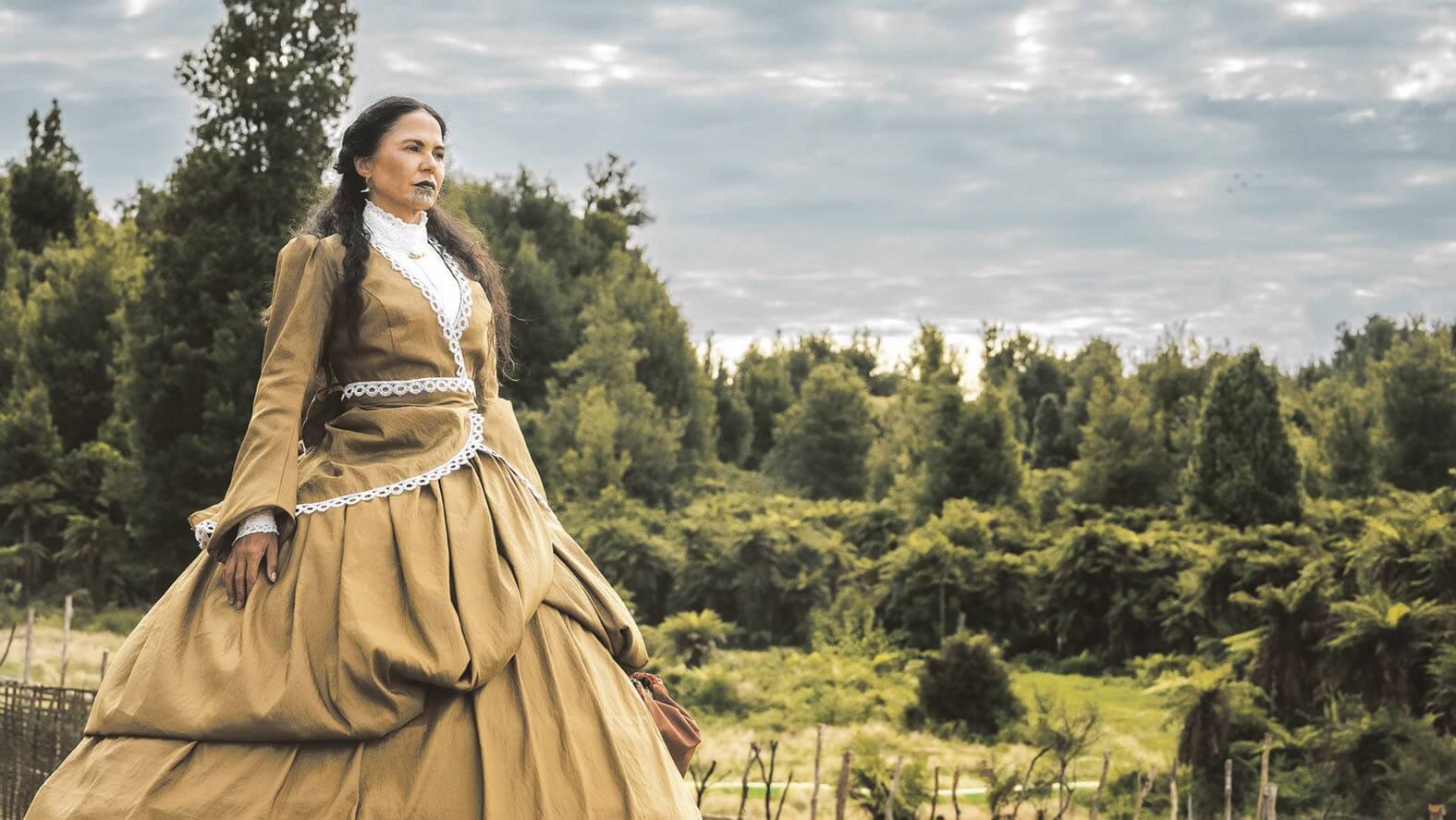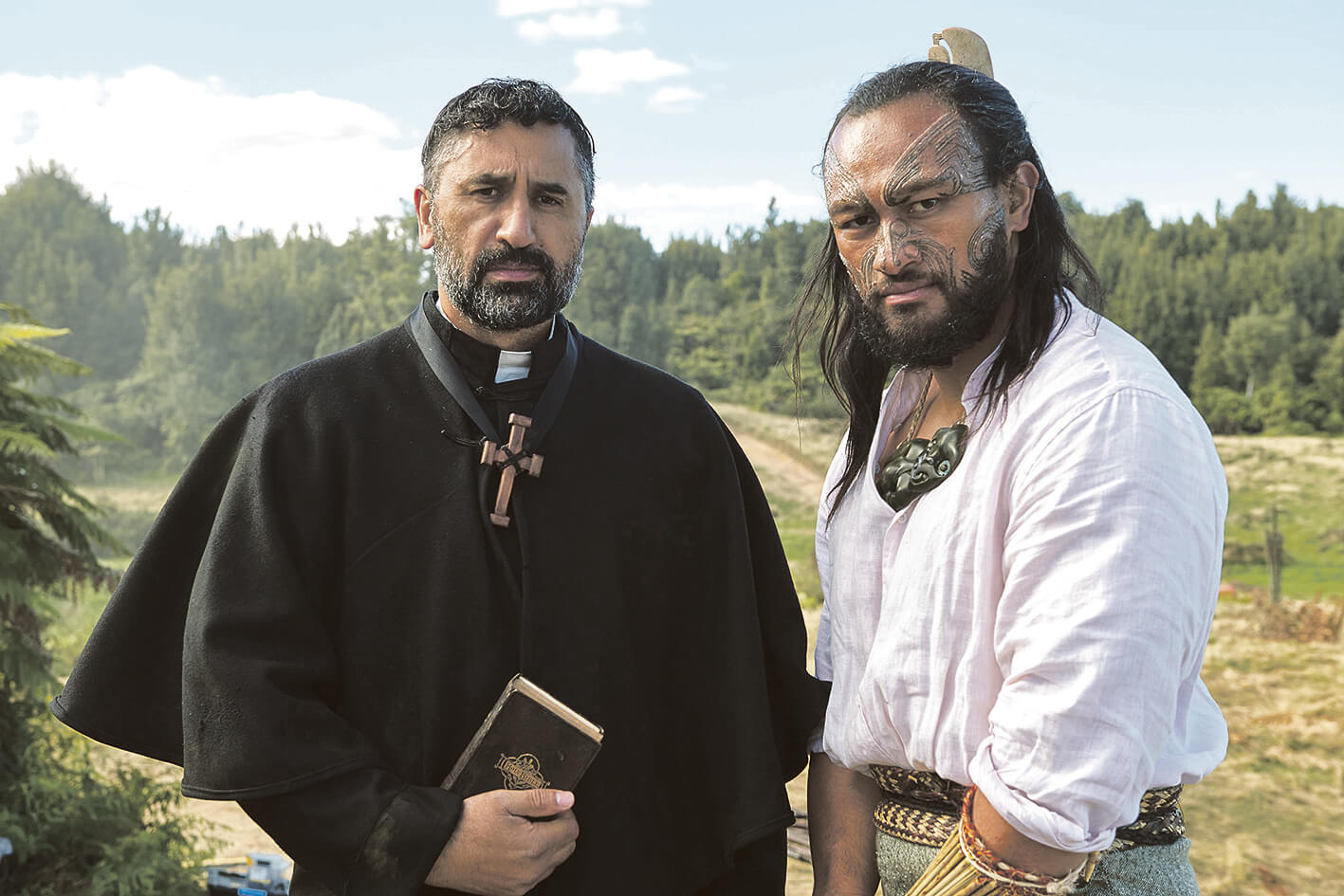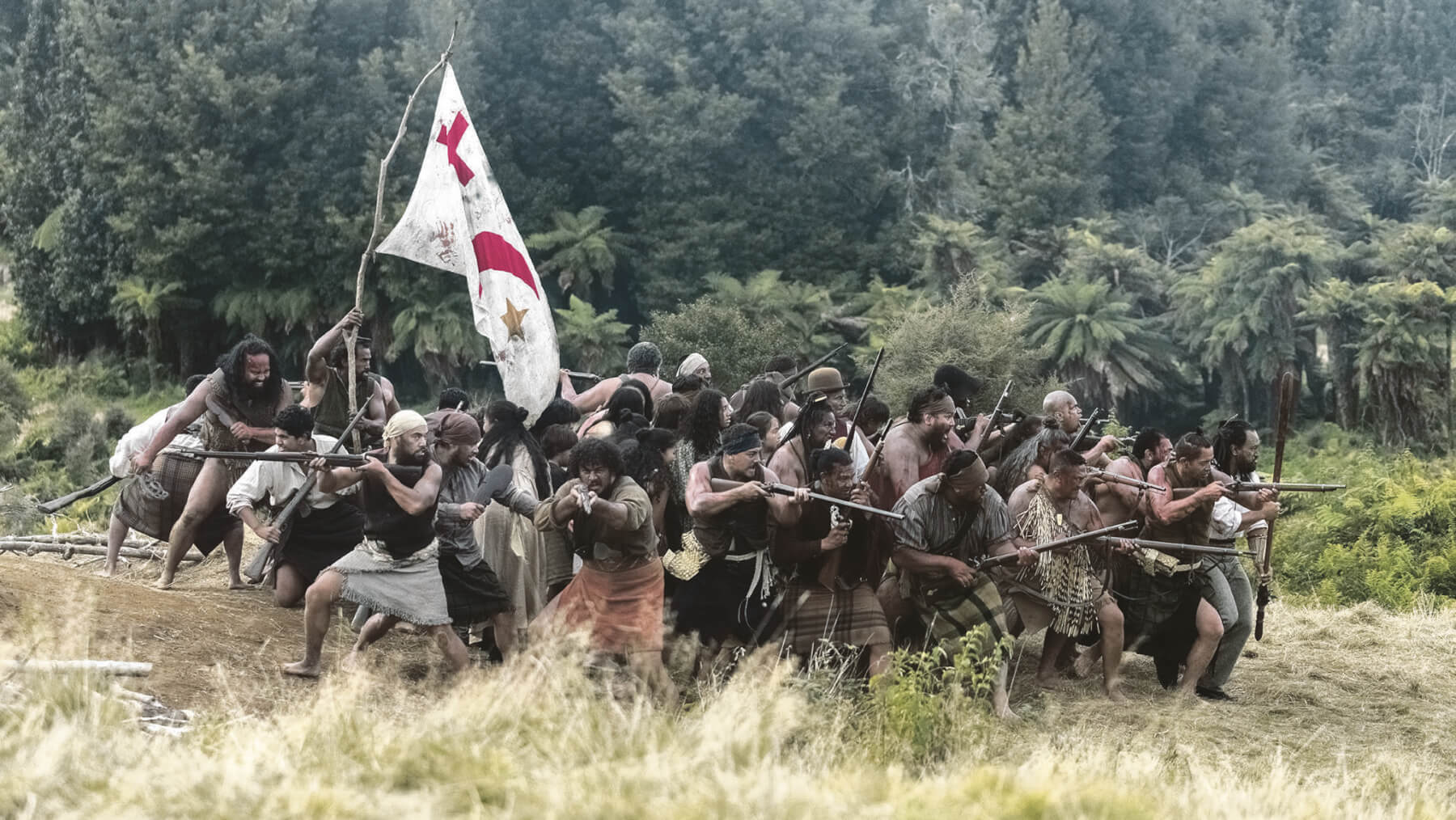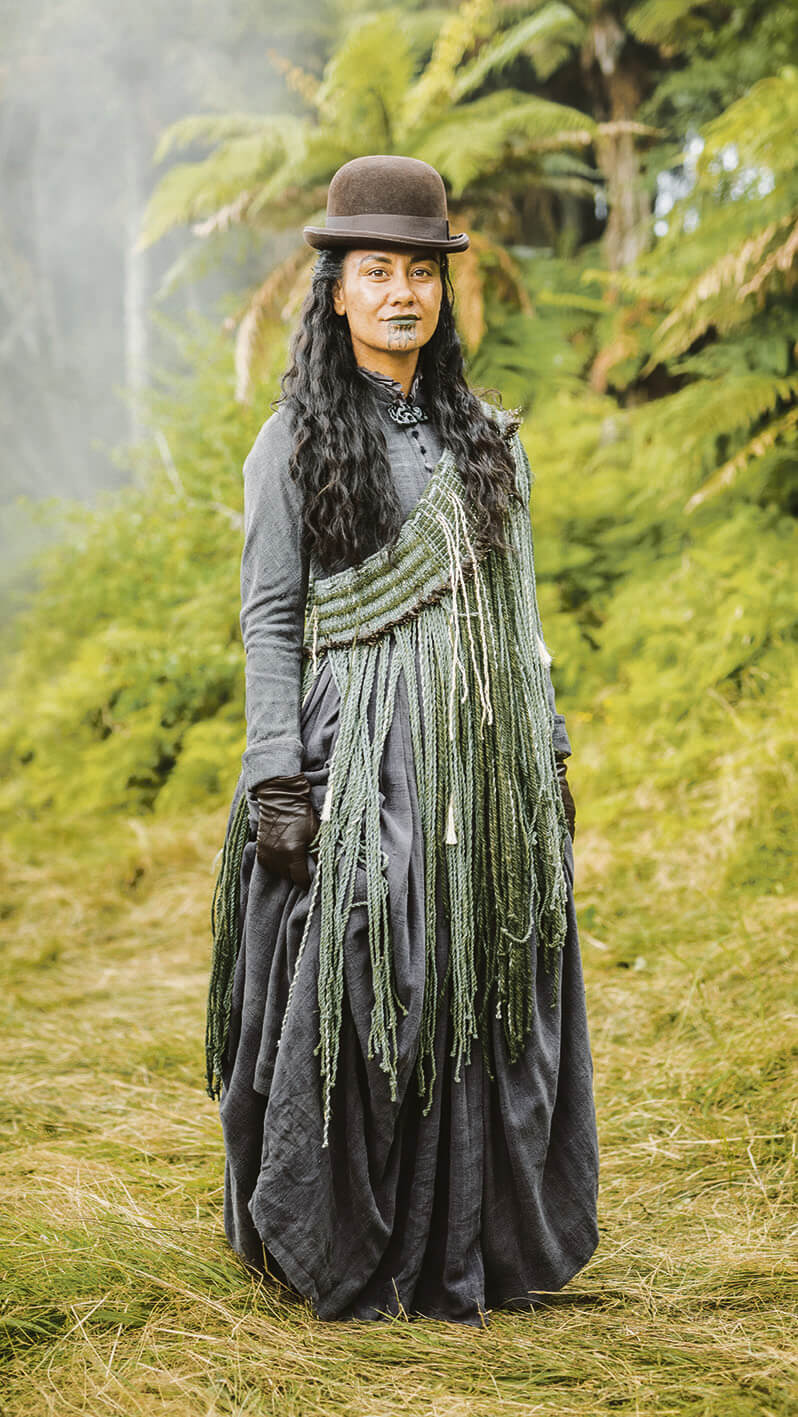A new movie in te reo Māori about the battle of O-Rākau will be the first in New Zealand cinema history to share the history from a Māori perspective.
It will be released during Matariki next month on June 17 in Hamilton.

Miriama Smith in the role of Hine-i-Tūrama. Photo: Supplied.
Film producer Piripi Curtis joined King Country News at the battle site during the recent 160th anniversary commemorations.
“This is the first time we’re telling the story from our own perspective. One that we’ve passed down from generation to generation, and is still felt today,” he said.
Set in 1864, Ka Whawhai Tonu (Struggle Without End) describes “a battle fought with impossible odds” between Māori and Government forces during the New Zealand Land Wars.
The film is set near Kihikihi and features numerous actors with close whakapapa links to those who were there.

Ka Whawhai Tonu (Struggle Without End) features Cliff Curtis, left, as Wi Toka and Te Wakaunua Te Kurapa, right, as Te Whenuanui. Photo: Supplied.
The young stars are Paku Fernandez and Hinerangi Harawira-Nicholas. They will appear alongside Miriama Smith, Temuera Morrison who plays Rewi Maniapoto (and is himself a Maniapoto descendent), and Cliff Curtis.
A team led by director Mike Jonathon spent five years on the project.
Curtis, a teacher by trade, said the film medium’s emotive character would help New Zealanders learn about the battle of O-Rākau.
 Out next month, new film Ka Whawhai Tonu will make cinema history by depicting O-Rākau through a Māori lens.“Emotions charge your memory,” he said.
Out next month, new film Ka Whawhai Tonu will make cinema history by depicting O-Rākau through a Māori lens.“Emotions charge your memory,” he said.
“When you’re caught up in an emotional story that we control fictionally, we heighten your emotions and therefore we heighten your retention and memory of what happened in the battle, and what was said.”
The story highlights the greatness of the warriors against extreme adversity.
“What they faced was courageous. It was 350 Māori, women and children included, versus thousands of colonial professional soldiers.”
Curtis said the kiriata (movie) is a fictional story where two teenagers’ worlds collide on the battle’s eve – in an “unlikely friendship” which becomes a beacon of light in the dark moments of battle.
Eventually the protagonists end up with a group of orphans seeking safety.
Fidelity to history was the filmmakers’ highest concern, Curtis said.

Kataraina Howden-Borrell plays Riro in Ka Whawhai Tonu. Photo: Supplied.
“We received the permission of the descendants to use their ancestors in the film.
“Although the tūpuna are interacting with fictional characters, the important thing was to show the battle as accurate to the descendants and the iwi’s version of events.
“At the time, the colonial government had a tendency to change the reality of what actually happened.
“They overstated and understated where it suited their narrative.”

Piripi Curtis
Curtis said it was a bit like the making of the film Titanic – a fictional story intended to be “dead set accurate” in its portrayal of history.
An example of this attention to detail in Ka Whawhai Tonu concerned the making of the set.
A 1:1 scale pā to match the real site was built using a GPS digger.
“We dialled up the dimensions and he dug it to scale, one to one.
“When you get inside the pā site you realise how crazy it was for them, to try and take on two and a half thousand soldiers with the latest technology.”








